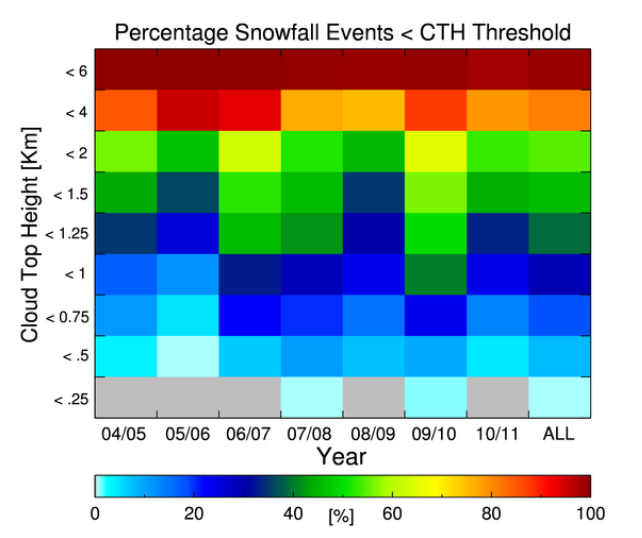Future Satellite Missions
Recent advances in spaceborne precipitation radars have broadened our viewing area and increased the number of observations in any given area. However, these radars still struggle to reconcile the light snowfall that comes from shallow clouds. While the accumulation may not be substantial compared to a midlatitude blizzard, in places like Barrow, AK, much of the falling snow comes from clouds less than 1km deep and with reflectivities of less than 0 dBZ. Those limits place important requirements on future spaceborne radars if they are to reliably detect frozen precipitation. Using high-resolution radars based on the ground (ARM) or on airplanes (IPHEx, OlympEx campaigns), we quantify the effects of degrading radar resolution and sensitivity to multiple radar wavelengths. This knowledge determines the trade-space of instrument characteristics necessary for program managers of agencies like NASA and NOAA to define the next radar(s) in space. This work is funded by NASA and DOE.

